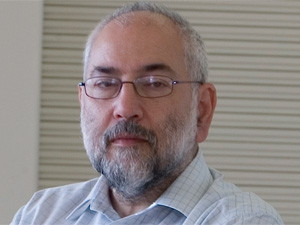
The University of Witwatersrand's Joburg Centre for Software Engineering (JCSE) has called on the public and private sectors to pledge financial support towards its tech hub project.
Tshimologong Precinct, also dubbed Tech-in-Braam, is a project to see the establishment of a modern technology hub in Braamfontein, Johannesburg, which will nurture the production and consumption of local ICT products and services.
Speaking at the unveiling of the project last night, professor Barry Dwolatzky, director and CEO of JCSE, said the project cannot succeed without external buy-in from financial partners. "Real innovation is not going to come from large corporates or from mom and dad's garage," said Dwolatzky. "Digital technological innovation will come from tech hubs such as this one."
Corporates can pledge financial support of R250 000 towards the project, while SMEs and individuals can pledge a donation of R50 000, which will see their names added to a donors' board at the precinct. Using examples like the Nairobi iHub, in Kenya, Google Campus, in London, and the Cambridge Innovation Centre, in Massachusetts, Dwolatzky explained that almost all major cities around the world have tech clusters such as the one planned for Braamfontein.
He pointed out that the Tshimologong Precinct already delivers in four of the five success points of working tech hubs. It is close to university research as it is situated close to Wits and the University of Johannesburg, it is close to customers with major businesses in a 10km radius around the precinct, it has the necessary infrastructure, and lifestyle factors such as housing and means of transport are in place. Dwolatzky conceded the fifth success point - support from government - is not yet in place, but expressed his confidence that government will also see the benefits a tech hub like this will yield.
Braamfontein was chosen as the ideal location for the tech hub, because of its rich history of industry, innovation and culture, but also for all the characteristics of a successful cluster location it possesses. Dwolatzky explained how the half a city block, owned by Wits, will be overhauled to create the digital content co-working hub, including training rooms, computer labs, meeting rooms, bars and seating areas. The street block consists of two former night clubs, offices, a warehouse and retail space, and renovations start on Monday.
Going green
Tshimologong Precinct is not only a boost for tech innovation, but also a step closer to greening Johannesburg in its move towards becoming a smart city, says Anna Cowen, architect, urbanist and facilitator from Meshfield.
Also speaking at the launch last night, Cowen said a greening concept is used in the US that sees a city block being used not only for collaboration, but also regeneration. In a similar manner, Tshimologong Precinct is looking at the implementation of a greening strategy that will ultimately see more energy created than is being used.
"Our vision is to make places that are in tune with their environment. For Tshimologong, we want to make it a place that belongs to Joburg and should be different to what you may find in Nairobi," stated Cowen. "Our belief is to innovate rapidly. [Dwolatzky's] vision of co-working and collaboration is actually key to what we believe we are going to do here."
The work of turning the buildings forming part of the tech hub green will start as soon as the JCSE secures funds. The founder square is going to be filled with plants from outside to cover most of the whole block.
Cowen says they also plan to link the buildings together to create a more friendly co-working space using a green gantry. The green gantry can be used as a vertical research lab around sustainability to test different ideas, as well as a source of energy, water reticulate or a vertical vegetable garden. "One season it could be used as a tomato garden and become something totally different the next season," she noted. The green gantry could work as a fire escape and people can move up and down between the buildings.
In addition, Meshfield plans to have a data reading system to record heat, energy and water consumption using the precinct.
Share